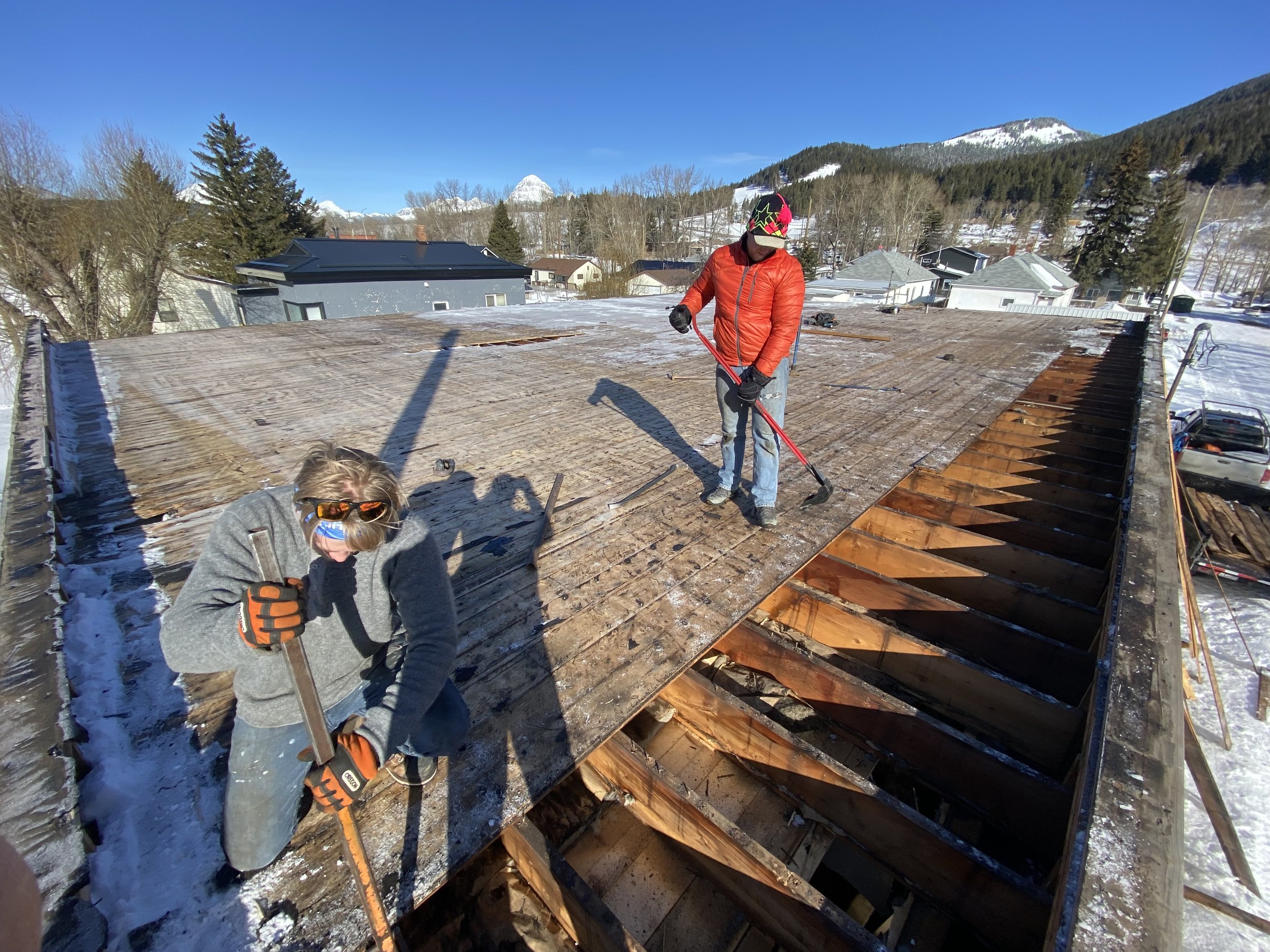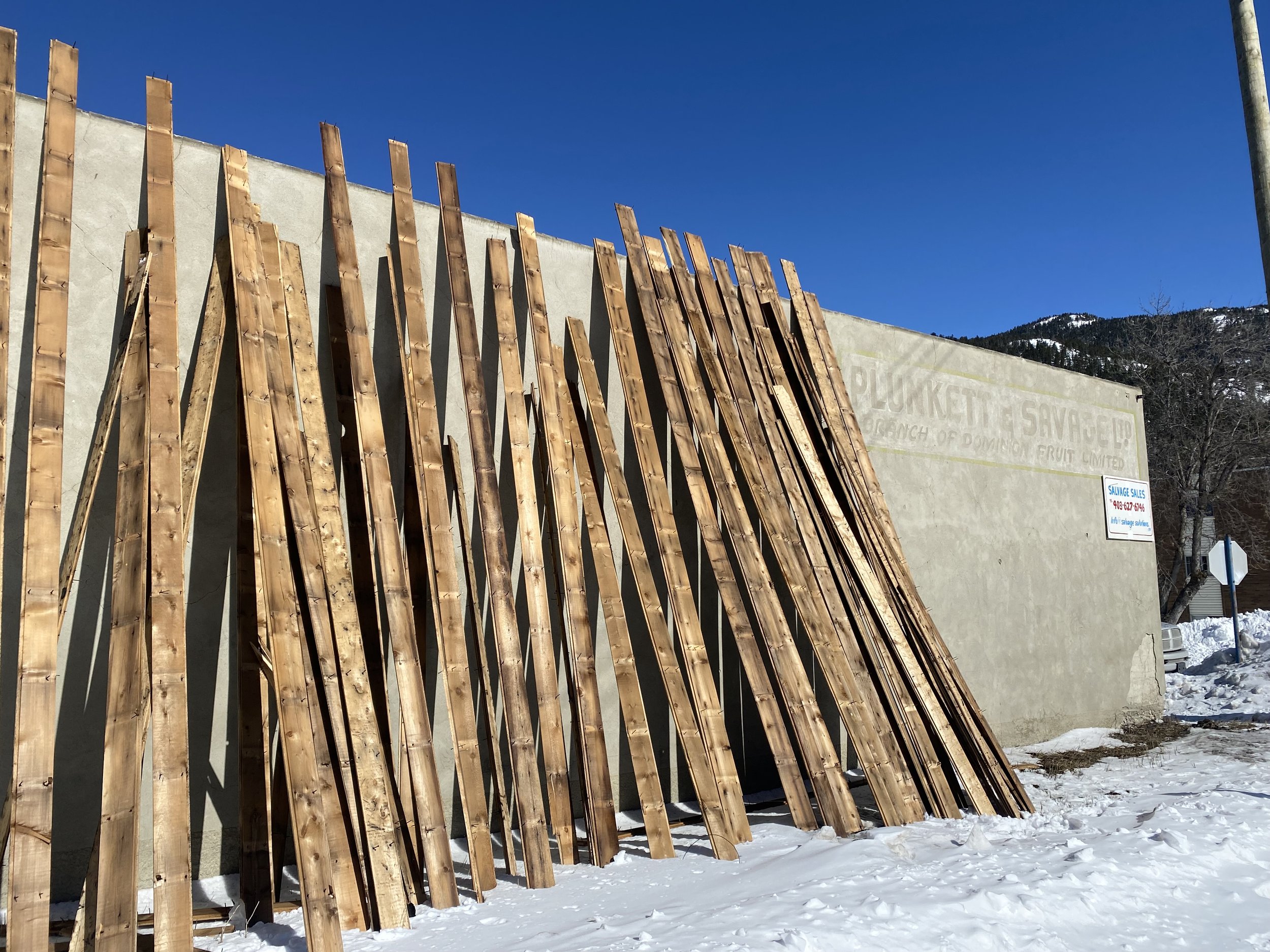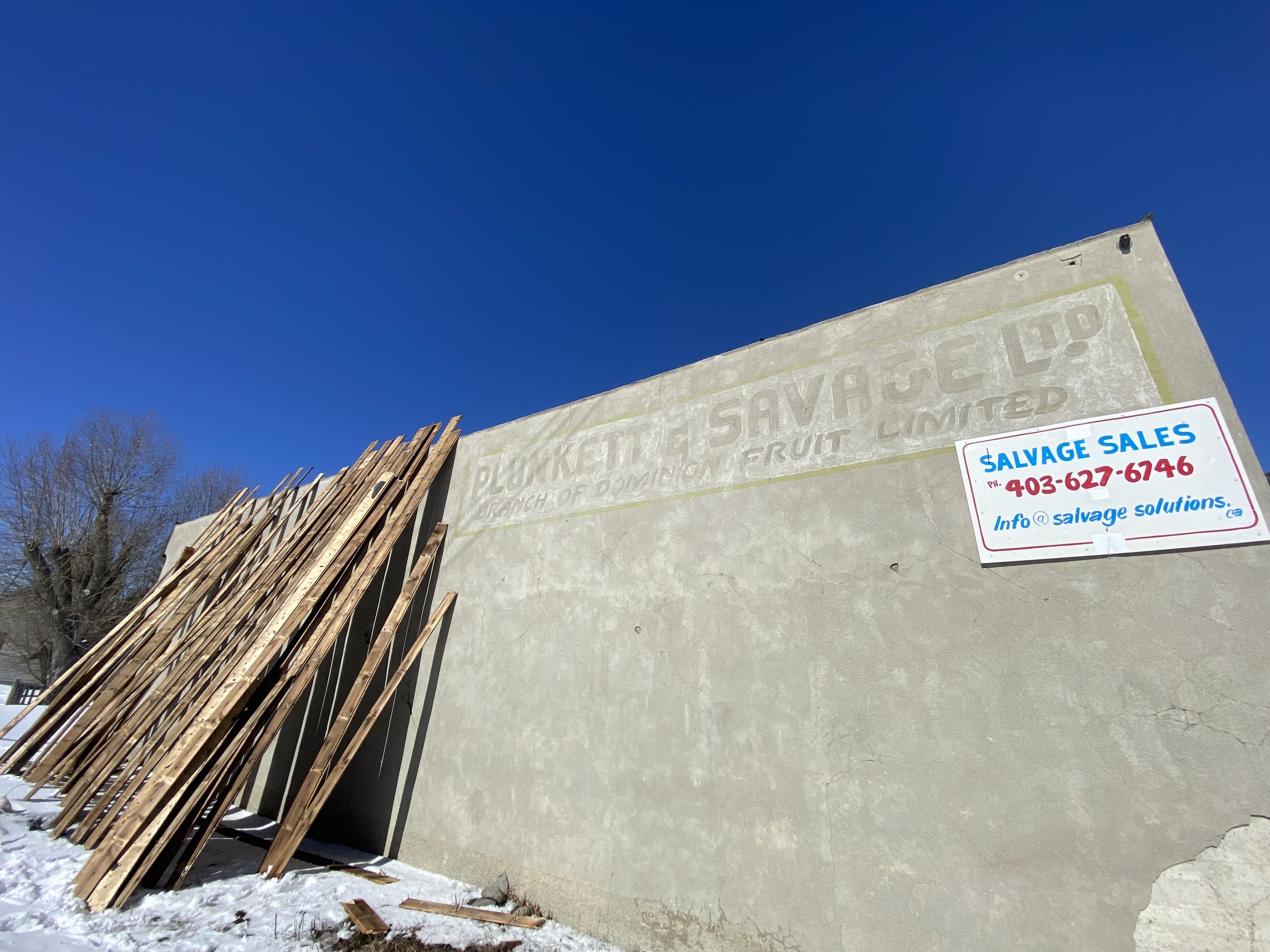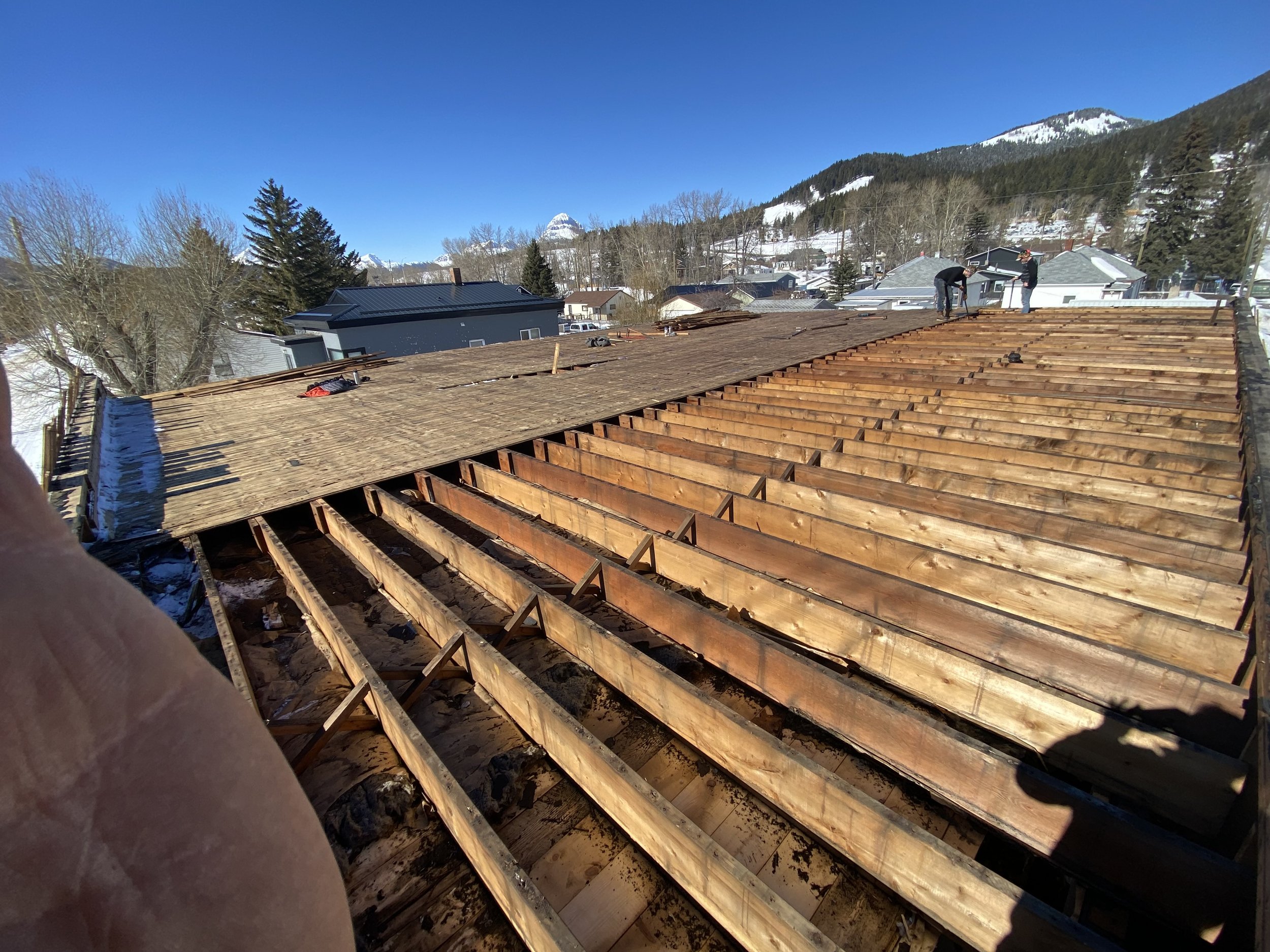Plunkett & Savage Ltd. Reclamation
The following article was originally published in the Crowsnest Pass Herald by Nicolas L. M. Allen





New development will be repurposing lumber from the Plunkett building in downtown Blairmore.
A new five-plex development will be repurposing lumber from the Plunkett building in downtown Blairmore, with work on the property beginning to take place.
Jesse Bond, a realtor at Real Estate Centre who will be selling the finished product, finds the historical aspect appealing for potential buyers and plans to complete listing contracts with details like square footage and pricing soon.
“I think more, more companies should follow suit with this sort of thing,” said Bond.
Jason Clifton, the current owner of the property, recommended speaking with the former owners to learn more about the history behind the building.
In an interview on March 25, brothers Denis and Allan Marciel, former owners of the Plunkett & Savage building, shared insights into the history of the property and its transformation over the years.
The building, bought by their father Americo around 1967, served various purposes throughout its existence, spanning over five decades until its sale two years ago to Clifton.
Originally constructed as a schoolhouse in the late 1920s or early 1930s, the building underwent reconstruction after a fire in the 1930s, keeping its educational function. Denis and Allan recall the structure likely housed four to six classrooms during its time as a school before ceasing operations sometime in the late 1930s or early 1940s.
Post-World War II, the building found a new purpose under the ownership of Plunkett & Savage, a fruit company.
“It was bought by a company that was called Plunkett & Savage, and that’s why everyone called it the Plunkett Savage Building,” said Denis, the older of the two brothers.
Aloysius Goodenough Plunkett was the Plunkett part of Plunkett & Savage according to the Lethbridge Historical Society. It was a wholesale fruit company that operated in southern Alberta during the first half of the 1900s. The company was later purchased by Dominion Fruit Company.
It served as a staging area for transporting fruit from Creston to Alberta until the Marciel family got it in 1967, primarily using it for storage. Marciel’s main store was in the building now used by Copy Magic.
“I was very young when Dad got it too, but I sort of remember that transition to a warehouse for building supplies and other materials,” said Allan.
Reflecting on their experiences, Denis and Allan fondly recall their father’s passion for bird carving, which he pursued in the building’s later years. They also reminisced about youthful gatherings at the warehouse.
One notable aspect of the building’s history was its use of reclaimed materials. Their father salvaged timber from a dismantled locomotive roundhouse at Summit Lake used by Canadian Pacific Railway, along with floor joists from a demolished school, repurposing them for construction on the building.
They expressed enthusiasm for the ongoing repurposing efforts, particularly for the condominium project that aims to incorporate lumber from the original building.
“I think it’s a great idea. I think it’s a great there’s lots of really neat lumber in there,” said Denis.
The contractor in charge of gathering the material is Salvage Solutions Limited. They supply reclaimed building materials & décor for residential & commercial projects. Michael Gerrand, owner of Salvage Solutions, shared how he got into the line of work.
“I used to travel all around Alberta watching these beautiful buildings, getting burnt and buried and I figured it didn’t seem right. We just started salvaging buildings one at a time and probably in the past 14 years we’ve done hundreds of buildings, reclaimed a lot of wood and diverted it from going to the landfill,” said Gerrand
Speaking about the current project which started on March 8, he talked about the building’s sturdiness and the heavy equipment it would have been able to hold inside.
“It was built so sturdily, probably so they could accommodate a forklift or a machine inside. The floor structure is very rigid, with two by 10 joists. We’re ripping off the oak flooring right now and under that is another floor,” explained Gerrand.
Gerrand added that if anyone’s interested in a piece of that history, they should contact him, and he will “set them up with some quality reclaim.” According to Gerrand, the salvage process should be completed next week.
With the project underway, Denis and Allan said they eagerly await updates on the project’s progress. With the transformation of this historic landmark, residents can look forward to seeing its legacy preserved in the fabric of the community’s ongoing development.

